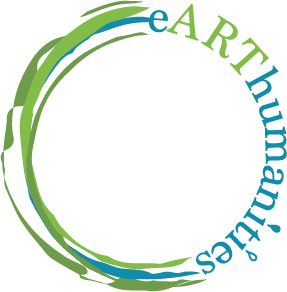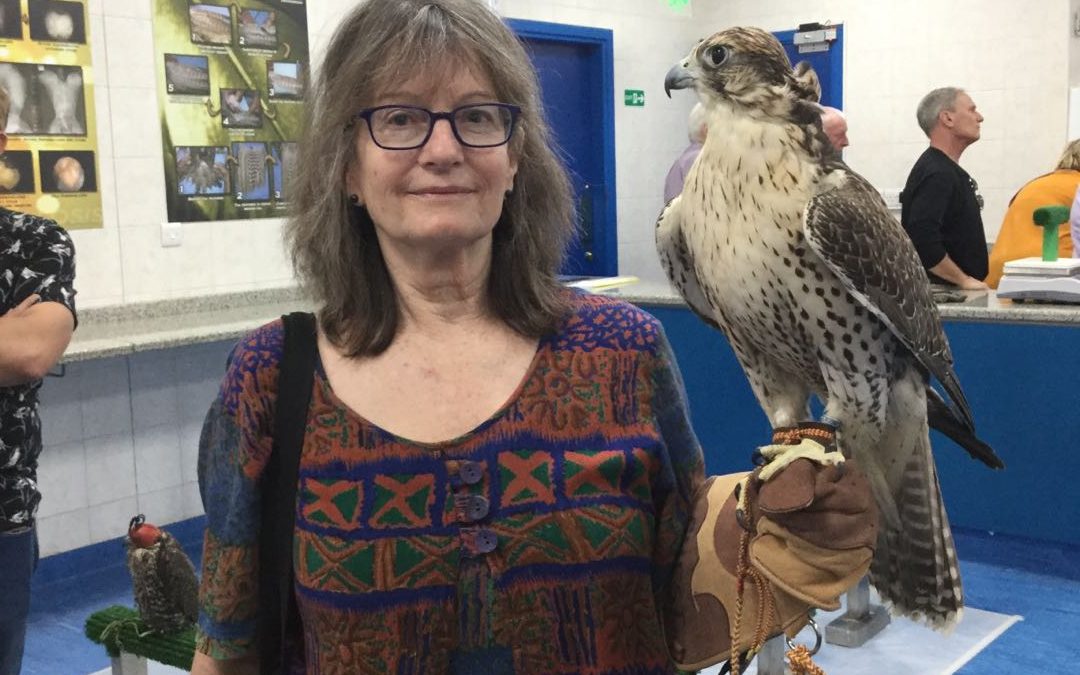You are a considered a pioneer in the discourse of Heritage and Environment in Albania. What sparked your interest to examine these kinds of linkages in your native country?
I am a Professor at the University of Tirana in the Department of Geography and teach natural and cultural heritage, human ecology and economic evaluation of natural resources. In the new political, social and economic reality, Albania’s natural environment and cultural heritage
Islam has had a long and enduring legacy in Albania. What are some of the most important influences and heritage sites that stand out today?
Although a small country, Albania has a great number of monuments of archaeology, architecture, ethnography, history, and art that bear not only the creative talent of Albanians in different periods of history but also the influence from other cultures in the long process of exchange and co-existence with them. Albania has always been a crossroad of civilizations and influences which explains the variety of heritage sites.
In
Albania also includes a number of sites listed in the World Heritage List of UNESCO such
500 years of coexistence with Ottomans has undoubtedly left imprints not only on the architecture but also on the religion (about 70% of the Albanians are Muslims), traditional folk music which is largely shaped by Ottomans. Instruments, style of singing, playing, dancing, traditional oral poetry and storytelling, dressing (folk costumes), cuisine, social relations, etc., are other notable areas of Ottoman influence in the Albanian culture.
What are some of the current projects that you are working on?
Over the past 20 years, Albania has aspired and worked hard to rejoin the international community after decades of isolation. At this pivotal moment when
In addition to my book, I have taken the opportunity to organize an exhibition at the RCC featuring “Nature, culture
Acknowledging the growing investment in tourism in my country, I have decided to prepare a detailed guidebook that will not only inform travelers about Tourism in the protected areas in Albania but will hopefully engage them in becoming stewards of these precious landscapes.
Together with colleagues from Eberswalde University, Germany, we are also drafting a project within Erasmus about Augmented reality in the Marine protected area “Karaburun-Sazan”.
Nature everywhere is under accelerated threat, through infrastructure development, industrialization, and even tourism. What are some of the steps that you think should be taken to help protect Albania’s pristine natural habitat as the country becomes increasingly more open to tourism.
Albania is a small country with high potential for tourism development either for
Selected Publications:
- with Gjovalin Gruda. “Albania” In Beach Erosion and Protection in Europe, edited by Enzo Pranzini and Allan Williams, 345–54. London: Routledge, 2013.
- “Geotourism Development in the Protected Area Llogara–Karaburun.” Acta Geoturistica 7, no. 2 (2016): 1–6.
- “Geotourism and Sustainable Development in Skrapar.” Acta Geoturistica 6, no. 2 (2015): 11–17.
- “Geoinformation of the Natural Heritage of Fier County.”
Vizione 21 (2014): 311–21. - “Glacial Landforms in Albania and Their Touristic Values.” Geologia,dell’Ambiente, Periodico trimestrale della SIGEA 3 (2012): 163–68.
- “Cultural Heritage of Albania and Geo-Information Establishment Need for Better Promotion and Management.” Science and Technology for Cultural Heritage Journal19, no.1–2 (2010): 87–99.
List of recent publications
Books
- Protected areas of Albania-challenges of a developing country, in process
- Human ecology, 2014, Marin Barleti, Tirane, p.193 University textbook
- World economy, 2013, Marin Barleti, Tirane, p.237 University textbook
- Beach erosion and protection in Europe, 2013, Routledge & Taylor and Francis, UK, Co-author of the chapter “Adriatic and Ionian coastline”. p.457.
- Geography 12 (Geography of the Albanian regions), 2012, Erik, p.176 (High school textbook)
- Albanian regions, 2008, Dajti 2000, Tirane, p. 255
- Geography 3 ( Natural and cultural heritage), 2006, LILO, p.110 (High school textbook)
- La porta D’oriente (Gate of Orient) –
Durres county, 2006, UNOPS, Italy, co-author, p. 143.
Papers
- Geotourism development in the protected area Llogara-Karaburun, Acta Geoturistica, 2016, Slovakia, volume 7, number 2, p.1-7.
- Geotourism and sustainable development in Skrapar, Acta Geoturistica, 2015, Slovakia, volume 6, number 2, p.11-17.
- Geoinformation of
h ydromonuments of Albania in function to the tourism development, Journal “Geographical research”, 2015, Kosovo. - Use of GIS technology for natural disasters management in Albania, International Journal of Science and Research, 2015. (IJSR) ISSN: 2319-7064.
- Geoinformation of the Natural Heritage of Fier County, Journal “
Vizione 21”, 2014, Macedonia, p. 311–21. - Evaluation of the touristic potential of the cross border area Ohër-Prespë and sustainable development, Journal “Geographical studies” 2014,
vol.19 , Kristalina, Tirana, p. 299-313. - Morphotectonic and morphologic evolution of the coastal area Shëngjin-Grykëderdhja e Bunës, Journal “Albanological studies” 2014/4, University of Tirana, p. 204-213.
- The role of medicinal and aromatic plants in the sustainable development of the communes of Maqellara, Sllova and Fushë-Çidhën, Journal of Social and Human Sciences, IBU, Macedonia. January 2014.
- Evaluation of the resources for
a sustainable development of Prespa area in Korça County, International Journal of Ecosystems and Ecology Science (IJEES), USA, 2013, vol 3. p. 491- 496. - Natural and human impact on the morphological risks in Çermenika highland, Journal “Albanological studies” 2013/4, ISSN: 2304-3828, University of Tirana, Tirana, p.29-40.
- Monuments of nature of Mirusha river basin, International Journal of Ecosystems and Ecology Science, Volume 2/4, 2012, USA, p.347-354.
- Geoecosystems in Albania, Geologia,dell’Ambiente, Periodico trimestrale della SIGEA, Società Italiana di Geologia Ambientale Poste Italiane , No. 3/2012, Italy, p. 181-189.
- Glacial landforms in Albania and their touristic values, Geologia,dell’Ambiente, Periodico trimestrale della SIGEA, Società Italiana di Geologia Ambientale Poste Italiane, No. 3/2012, Italy, p.163-168.
- The contribution of geographers in the identification, promotion and protection of natural and cultural heritage, Journal “Albanological studies”, 2012, Vol 4, University of Tirana, p. 289 – 297.
- Mountain area heritage of Korca district in view of sustainable development, Journal “Albanological studies”, 2011/4, University of Tirana, p.377-387.
- Geoinformation of the Albanian citadels, GeoAlb 2011, Kosovo, p.420-423.
- Geoinformation of the Albanian caves, GeoAlb 2011, Kosovo, p. 448-450.
Cultural heritage of Albania and geoinformation need forbetter promotion and management, Science and technology for cultural heritage journal, Fabrizio Serra Editore, 2010, Italy. p.87-99.- Touristic potential and development challenges of Kruja, Journal “Studime
albanologjike ” 2010/4, University of Tirana, Faculty of History and Philology, Tirana, p.451-460. - Damage of the Albanian fortresses by human and natural factors, Journal “Albanological studies” 2010/4, University of Tirana, Faculty of History and Philology, Tirana, p.323-332.
Papers in
- Geotourism potential of the caves of Albania
- Canyons of Albania and
geotourism development - Geotourism potential of Thethi National Park
- Geotourism potential of Thethi National Park
- Geotourism potential of National Park “Bjeshkët e nëmuna”
About Merita Dollma
Merita Dollma is a lecturer at the University of Tirana in the Geography department of the Faculty of History and Philology. She worked as a scientific researcher at the Albanian Academy of Sciences from 1995 to 2007. Since 2008, she has been a full-time professor in the Geography department, where she teaches natural and cultural heritage, human ecology, and economic evaluation of natural resources at both bachelor and master’s level. She is author and

